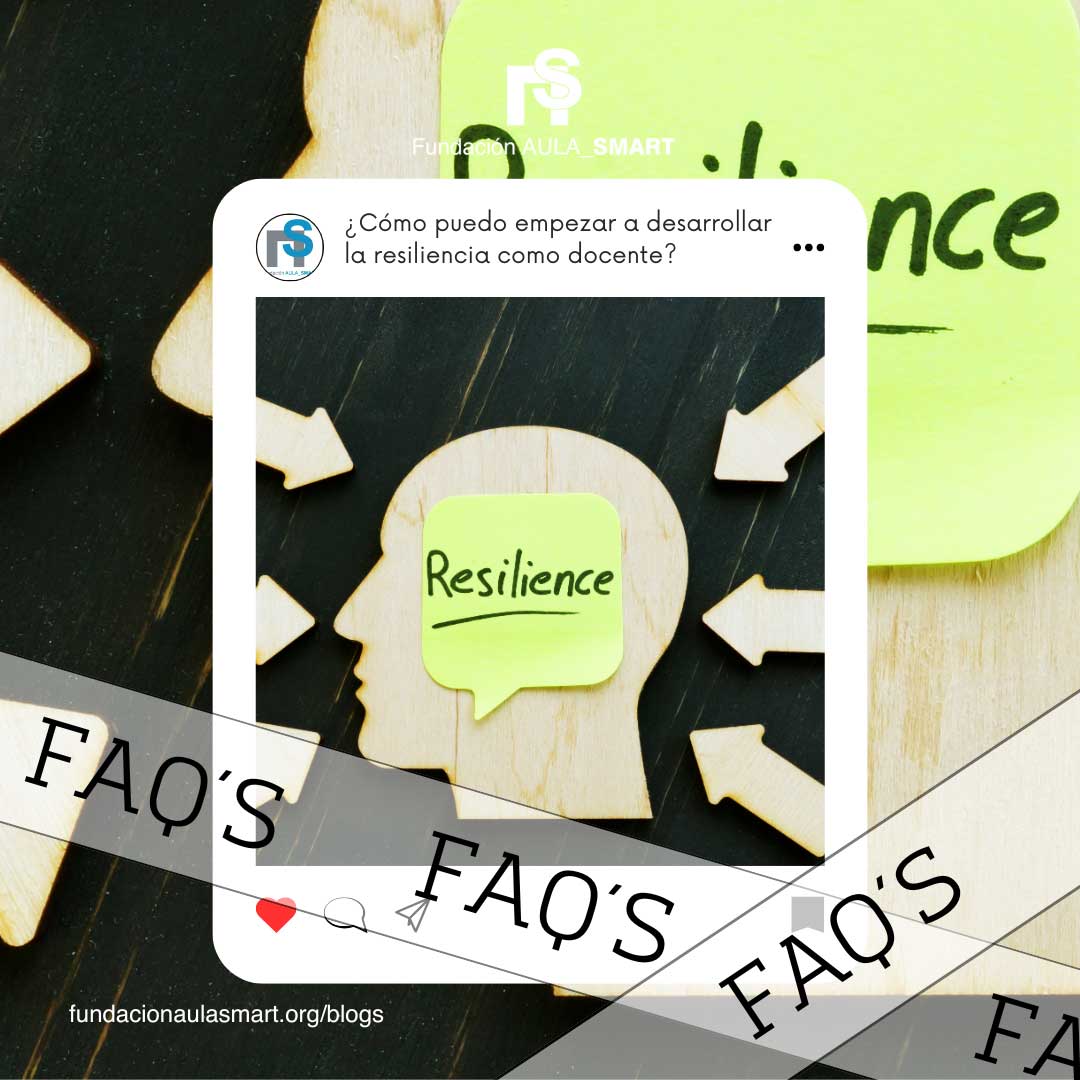Artificial intelligence as a solution to teaching exhaustion in education
Current context of education
Increase in teaching exhaustion in recent years
Teaching exhaustion is a growing problem in primary and secondary education in Spain. In recent years, it has increased due to multiple factors, including the lack of personnel and excess administrative load. This phenomenon has been even more pronounced during and after the Covid-19 pandemic, which exacerbated existing difficulties and led teachers to assume more responsibilities.
Main factors: lack of personnel and administrative charge
The lack of teaching staff and excess administrative tasks are two of the main factors that contribute to exhaustion. Teachers must manage a wide range of activities beyond teaching, which includes lessons planning, exam qualification and coordination of school activities. This labor overload impacts negatively on its ability to focus on teaching and general well -being.
Impact of pandemic in the education sector
Pandemia brought with it a drastic change in teaching methods, with rapid transition to online education platforms and the management of new technological tools. This implied an increase in the workload and additional challenges for teachers, who had to adapt without sufficient support and in a constant stress environment.
How artificial intelligence is transforming education
Examples of adoption of AI in school teaching and administration
In response to these challenges, artificial intelligence (AI) has begun to play an important role in education. Companies such as Google and Microsoft have developed tools used to support both teaching and administrative tasks. These solutions based on AI help automate routine processes and improve efficiency in educational management.
Benefits of automating routine processes for teachers
The automation of processes such as exam rating, class planning and communication with parents allow teachers to save time and concentrate on teaching. By reducing the burden of repetitive tasks, teachers can spend more time to interact with students and customize the educational experience.
Technological advances in the educational field: Google and Microsoft
Google has introduced virtual assistants and class management platforms that facilitate daily organization and planning. For its part, Microsoft has developed tools that allow teachers to adapt the content of their lessons through the analysis of academic data, making teaching more efficient and personalized.
AI solutions to reduce administrative load
Repetitive task automation tools
Artificial intelligence -based tools are transforming the way teachers manage administrative tasks. With the implementation of software capable of automating processes such as the correction of tests and the generation of reports, teachers can spend more time preparing classes and high -impact activities in students learning.
Examples of AI in class qualification and planning
The AI is used to expedite the examination of exams and tests through platforms that analyze and assign automatic grades. There are also tools that suggest class planning schemes based on learning objectives and the specific needs of students, which helps teachers optimize their preparation time.
How AI improves communication with parents
Another area in which AI contributes significantly is in communication with parents. With the use of virtual chatbots and assistants, teachers can send automatic updates about the academic progress of students and answer frequent questions. This reduces the burden of responding individually to each consultation and allows more efficient communication.
Personalization of learning through AI
Analysis of academic data and specific recommendations
The AI capacity to process large volumes of data has opened the door to a more personalized education. IA systems can analyze the academic performance of students and offer specific recommendations to address improvement areas. This approach allows teachers to adjust their teaching to meet the individual needs of each student.
Adaptation to different styles and learning rhythms
Thanks to the advanced algorithms, AI can identify patterns in learning and adapt the content to different styles and rhythms. This means that students who need more time to understand a topic or those who advance faster can receive more adequate attention and personalized materials.
Microsoft tools to adjust data -based lessons
Microsoft has launched applications that allow teachers to collect and analyze data on students' performance in real time. These tools help adjust the content of the lessons and make informed decisions about teaching strategies. This optimizes the educational experience, benefiting both the teacher and the student.
Impact of AI on the management of teaching exhaustion
How AI helps optimize teachers
The implementation of AI in administrative and teaching tasks allows teachers to optimize their working time. By delegating repetitive and tedious tasks to automated systems, teachers can focus more on creativity and direct teaching, reducing the feeling of exhaustion and improving their classroom efficiency.
Effect on the well -being and mental health of teachers
The decrease in workload thanks to AI contributes significantly to the well -being of teachers. Having more time to devote to pedagogical activities and less stress related to administrative tasks helps improve your mental health and reduce levels of exhaustion and anxiety.
Reduction of the workload and improvements in teaching
With fewer administrative tasks to perform, teachers can focus on designing more innovative educational strategies and promoting a more dynamic learning environment. This not only improves the quality of teaching, but also contributes to a better academic performance of students and a more positive school environment.
Success cases and implementation tests
Concrete examples of schools in Spain that have integrated the AI
In Spain, some educational institutions have begun to adopt AI tools with promising results. Schools in communities such as Madrid and Catalonia have integrated academic management software and data analysis programs to improve planning and monitoring of student performance.
Results obtained: Figures and recent studies
Recent studies show that the adoption of AI technologies in the educational field has reduced the time dedicated to administrative tasks by 30%, allowing teachers to invest more hours in pedagogical activities. These figures highlight the effectiveness of AI to relieve workload and improve educational experience.
Lessons learned from the adoption of AI in other countries
Countries such as Finland and Singapore, recognized for their advanced educational systems, have implemented success tools successfully. The lessons of these models show that an adequate training combination for teachers and a student -centered approach are key to maximizing the benefits of AI.
Limitations and challenges in the implementation of AI
Technological gaps and limited resources
Despite its benefits, the implementation of AI in education faces important challenges. Technological gaps, especially in rural areas or with less resources, hinder access to these tools. The lack of adequate infrastructure can limit the impact of AI solutions in certain regions of Spain.
Training and adaptation of teachers to new tools
In order for AI to be truly effective, it is essential that teachers receive adequate training. Adaptation to new technologies requires time and resources, and some teachers may face difficulties in integrating AI in their daily routines if the necessary support is not provided.
Ethical and data privacy issues
The collection and analysis of academic data also pose concerns about privacy and ethics. It is essential that schools and technology companies work together to guarantee the protection of students' data and to maintain the trust of parents and the educational community in general.
The future of education and AI in Spain
Projections on the integration of new technologies
The future of education in Spain promises a deeper integration of AI and other emerging technologies. It is expected that IA tools continue to evolve, offering more advanced solutions to customize learning and further reduce the administrative burden of teachers.
Potential developments and improvements in AI tools
Future developments could include more sophisticated tutoring systems, predictive analysis of student performance and collaborative platforms that connect teachers, students and parents in a more integrated educational environment. These improvements would help make education more efficient and student centered.
Collaboration between governments and technology companies
To maximize the benefits of AI in the education sector, a close collaboration between the government, schools and technology companies is essential. Policies that promote investment in educational technology and training programs for teachers are key to guarantee an effective and equitable adoption of AI in the educational system.
Conclusion
The incorporation of artificial intelligence in primary and secondary education in Spain represents a significant change in the way teachers address their daily work. The automation of administrative tasks such as exam rating, class planning and communication with parents allow teachers to save time and energy, improving their focus on pedagogical tasks that matter most. This change not only helps reduce teaching exhaustion, but also positively impacts the quality of teaching and student learning experience.
The AI capacity to customize learning is another key aspect that transforms education. Advanced algorithms allow adapting the content of the lessons to individual learning rhythms and styles, guaranteeing that each student receives the attention they need to progress effectively. This customization not only benefits students, but also provides teachers with tools to improve their teaching strategies and maximize the impact of their lessons.
However, for the adoption of AI to be truly successful, it is crucial that the existing challenges are addressed. The technological gap and the lack of access to resources in certain areas can limit the benefits of these tools, so a joint effort between governments, educational institutions and technology companies is required to guarantee equitable implementation. In addition, the continuous training of teachers is essential for the most of the AI capacities and so that they feel comfortable by integrating it into their daily routines.
Another important point is the ethics and privacy of the data. Schools must work hand in hand with cybersecurity experts and technology companies to protect students' academic and personal information. An implementation that respects these principles will help maintain the trust of parents and promote a safe environment for all participants in the educational process.
In summary, artificial intelligence has the potential to transform education in Spain by relieving teachers' workload and improving the teaching and learning experience. By adopting a balanced approach that includes adequate training, data protection and equitable access, AI can become a powerful tool for the future of education. This integration will benefit not only teachers, by providing them with a more sustainable and satisfactory work environment, but also students, facilitating more personalized and effective learning. The collaboration between the public and private sector will be essential to make the most of this potential and to ensure that education evolves fairly and responsible.
Frequent questions
1. How can Ai help reduce teaching exhaustion?
AI helps reduce teaching exhaustion by automating administrative tasks such as exam rating, class planning and communication management with parents. This allows teachers to focus more on teaching and interaction with students.
2. What are the main tools used in education?
Among the main AI tools used in education are Google and Microsoft platforms, which offer virtual assistants, data analysis systems and class planning tools to help teachers in their daily tasks.
3. What challenges schools face by implementing AI?
Some of the challenges include technological gaps, the need for adequate training for teachers and concerns about data privacy. These factors can limit the effective adoption of AI in certain institutions.
4. How does AI affect the personalization of learning?
The AI allows to analyze academic data and adapt the lessons to the individual needs of the students. This means that each student can receive personalized content and attention according to their learning style and rhythm.
5. Is the implementation of AI safely in schools regarding the privacy of data?
The security of the implementation of AI depends on the protection of students' data and privacy policies adopted by schools and technology companies. It is crucial that strict security standards are followed to guarantee the privacy and trust of parents and the educational community.




















Leave a comment
All comments are moderated before being published.
This site is protected by hCaptcha and the hCaptcha Privacy Policy and Terms of Service apply.